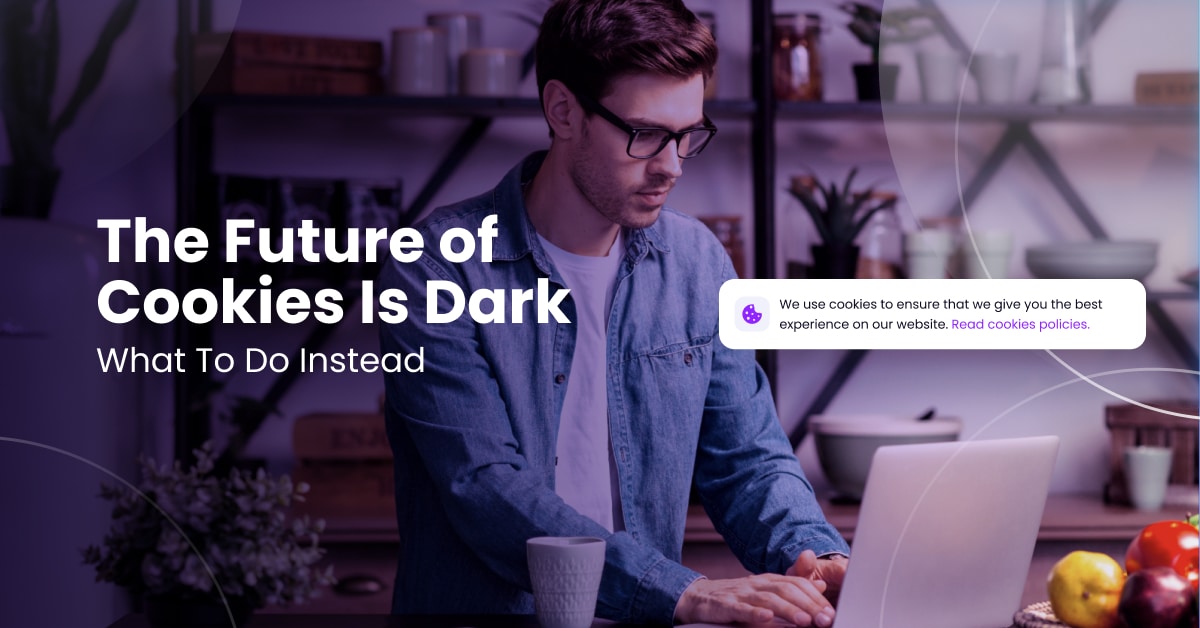Prepare for the cookieless future. User privacy concerns have prompted the advertising industry, Apple, and Google to develop new marketing strategies. New privacy laws make the conventional approach to personalized advertising no longer work.
To succeed, advertisers need to meet new consumer expectations and regulatory restrictions by creating direct connections with their audiences. Success in a world without third-party cookies starts with understanding how the world has changed.
New Opportunities In The Digital Landscape Changed
The future of cookies will take two primary forms: cohort-based marketing and first-party relationships. These opportunities deserve a prominent place in any effective marketing strategy today.
The Rise of Cohort Based Marketing: Not Ready For Prime Time
Rather than tracking each user’s online behaviors, the new approach pioneered by Google and adtech companies is cohort-based advertising. This means aiming your advertising at a group of people with similar interests instead of a single user. One example of this trend is the federated learning of cohorts (FLoC) that Google has pioneered. This concept is exciting because it will leverage machine learning to enhance digital advertising.
The FLoC concept was initially developed in 2021 in a privacy sandbox created by Google. This particular technology came to an end in January 2022. There are some ongoing consumer privacy concerns with the approach taken at Google. As a result, the company is moving in a new direction called “Google Topics” (or Topics API).
It’s not just privacy concerns that cause difficulties for cohort-based marketing. Fundamentally, tracking a large group of people may not be a good match for the customer journey you have developed.
First-Party Relationship: The New Way To Understand Consumer Behavior
Also known as a first-person cookie, this marketing approach is exciting. A first-party cookie is direct rather than relying on third-party cookie data from others in the marketing industry. For example, a potential customer lands on your website and accepts browser notifications or signs up for your email list.
Companies can target relevant advertising directly to their potential customers with this direct connection. Using your Customer Data Platform and Google Analytics, you might notice that one user is regularly visiting your “on-sale” pages. Based on that information, you can tailor marketing to that individual user. For example, send them more emails or notifications emphasizing your seasonal sales. In essence, establishing a robust first-party relationship means personalized messaging becomes much more manageable. A deep understanding of what your customers want means you can improve your emails, Google Ads, and other marketing campaigns much faster.
How To Succeed With First Party Cookies
Thriving in a 1st party relationship world requires solving two problems: the need for more website traffic and user consent.
1) Increase Website Traffic
First, this strategy requires potential customers to come to your website. That is getting harder today because many popular websites and tech companies operate as walled gardens. These walled gardens maximize user time on their website rather than sending people elsewhere.
2) Renewed Focus on Earning Consumer Consent
The second challenge is that privacy standards require you to seek consent to establish a direct relationship with a user. The adtech industry has previously played fast and loose with the privacy rules. Also, privacy regulations like GDPR have pushed companies to change their advertising strategies. It’s not just regulations either – companies like Apple have pushed back hard against invasive tracking methods. As a result, third-party data like traditional cookies are largely becoming obsolete.
Gaining consumer consent in this brave new world requires offering something attractive to users. There are different approaches to gaining consumer consent to individual user tracking. Common solutions include promising users a personalized experience, offering a discount (i.e. a discount code) or a free resource like an exclusive webinar or report.
Audience Engagement: A New Hope For Marketing
The future of cookies is fundamentally focused on creating and deepening direct relationships. Your online presence has to become more exciting and appealing to your potential customers. Your online content, events, and experiences have to be so appealing that your audience happily agrees to receive marketing messages from you.
Three Strategies To Grow And Deepen First Party Relationships
Use the following strategies to keep users returning to your website week after week, even as the digital landscape changes. By the way, offering engaging content and experiences has a secondary marketing benefit. You’re giving your users more chances to share your content with other people.
1. Boost Investment In Content Marketing and Online Events
To keep people coming back to your website repeatedly, appealing products and services are not enough. Your marketing itself needs to add value like original data, a community of like minded people and exciting content.
So, what exactly does a boosted effort in content marketing look like? According to the Content Marketing Institute, more than half of B2B marketers have increased their spending on video, events (including digital and hybrid), owned media assets (i.e., content you own and control), and paid media.
As third party cookies decline, it’s wise to take inspiration from a variety of brands who are achieving wins in content marketing.
- Salesforce offers a wide range of content marketing initiatives like podcasts (e.g. the Marketing Cloudcast and the Marketing Trends podcast), events (i.e. the Dreamforce conference has attracted tens of thousands of attendees) and much more.
- Dropbox shows that interactive approaches to content marketing can become wildly successful. A few years ago, Dropbox created a “What kind of marketer are you?” quiz to create awareness – a campaign that attracted significant leads.
- PayPal, the well known financial technology firm, shows a simple way to create content marketing: work with your users. PayPal Stories have recently featured a variety of successful small business owners and entrepreneurs. This PayPal approach to content marketing shows that you can make customers the star of your content marketing.
Investing more deeply in content marketing matters because it gives your customers a reason to keep coming back to your website. When customers are motivated to visit your site regularly, you have more opportunities to ask for their consent to market to them through their browser, email, and other means.
2. Grow Your Social Media Audiences
The best way to be ready for the end of cookies is to drive the audience to your own website. This way, you can generate proprietary, first-party data about your audience. Attracting your audience from social media is worthwhile because these audiences have already shown interest in your brand.
Since there are many social media platforms, there are two simple techniques to decide which platform to focus on. Start with your customers – what social media platforms do they like the most? Running a survey of your customers to ask them about their favorite social media sites can help to guide you.
Further, you also want to think about which platforms have sufficient reach and advertising opportunities. For example, Facebook, Instagram, YouTube, and TikTok have a significant market share and interesting significant advertising features. Building a following on those platforms is another way to grow despite the uncertain future of cookies.
3. Build Your Customer Data Platform
Simply increasing the number of website visitors and subscribers is not enough to succeed in a cookie-less future. It’s vital to deepen your understanding of consumer behavior.
Implementing a Customer Data Platform is a significant next step. A CDP connects to your existing apps and platforms like your email marketing software, Google Analytics, and CRM. Drawing together multiple sources, it can help you understand the content and experiences that your customers engage in before buying.
Once you have a CDP in place, use to understand the customer journey in detail. Look at how many touchpoints a potential customer has with your brand before they buy. For example, you might see that high value buyers attend events like live shopping and download a few specific types of content.
As a result, you can quickly refresh your advertising strategies monthly based on the specific patterns your users are engaged in.
What To Do This Month To Thrive Without Traditional Cookies
Choosing the right marketing strategy matters, but your team also needs to know what exactly to do this week and this month to succeed. Use these tactics to win in today’s marketing game without focusing on third-party cookies.
1. Integrated Email Marketing Analytics
The emergence of new marketing opportunities like the metaverse is exciting. Positioning your brand to win in these emerging areas can pay off long-term. However, you also need to keep your eye on this quarter’s results.
Optimizing your email marketing effectiveness remains one of the best ways to drive higher returns. For example, check if your email marketing software supports A/B testing on subject lines, links and other elements. This approach lets you achieve individual user tracking through email.
Logging into your email platform and reviewing its trends on open rates, clicks and replies only give you part of the picture. It is also vital to know whether a subscriber has attended an online event or engaged with your sales team. Arena’s CDP platform makes it easy to connect the dots between email marketing data and other customer interactions.
2. Boost Push Notification Marketing
While email marketing has exceptional ROI, it is not the only opt-in digital marketing option. With push notifications, you ask the customer for permission to send messages to them directly through the browser or mobile apps.
According to Airship research, opt-in rates for mobile app push notifications range from 29% to more than 70%! To earn high opt-in rates from your prospects, keep investing in engaging content and virtual events. When prospects enjoy your content and experiences, they will happily opt in to receive more information from you.
3. Review Your Privacy Policy
Customer expectations for privacy and data protection are increasing every year. As marketers pivot away from cookies, your privacy policy needs to keep up. There are several layers to updating your privacy policy for the post cookie era.
Start by reviewing your privacy policy to see if it reflects the customer data you are currently collecting. If your privacy policy was last updated over a year ago, it might be out of date. For example, adopting a customer data platform to build a comprehensive customer profile may require an update to your privacy policy because you are changing how you use data.
Next, take a hard look at your security safeguards. You probably have robust systems to protect highly sensitive data like payment data. However, your marketing databases also contain personal information, ensuring that data is protected.
The New Way To Achieve Personalized Marketing
Cookies were powerful because they unlocked personalization for digital marketers. As we say goodbye to cookies as a central strategy, how can you keep data-driven personalization?
The answer lies in setting up a customer data platform for your brand. It’s more than data dashboards and exciting reports. A customer data platform is one of the best ways to identify advocates and passionate fans in your audience. With a CDP, your marketing team can also learn which marketing assets are driving your results.
Discover how a customer data platform can solve today’s most pressing problems in marketing. Download Arena’s CDP Ebook: The Future of Marketing and Sales. Your marketing personas will be grounded in factual data with a CDP in place.



